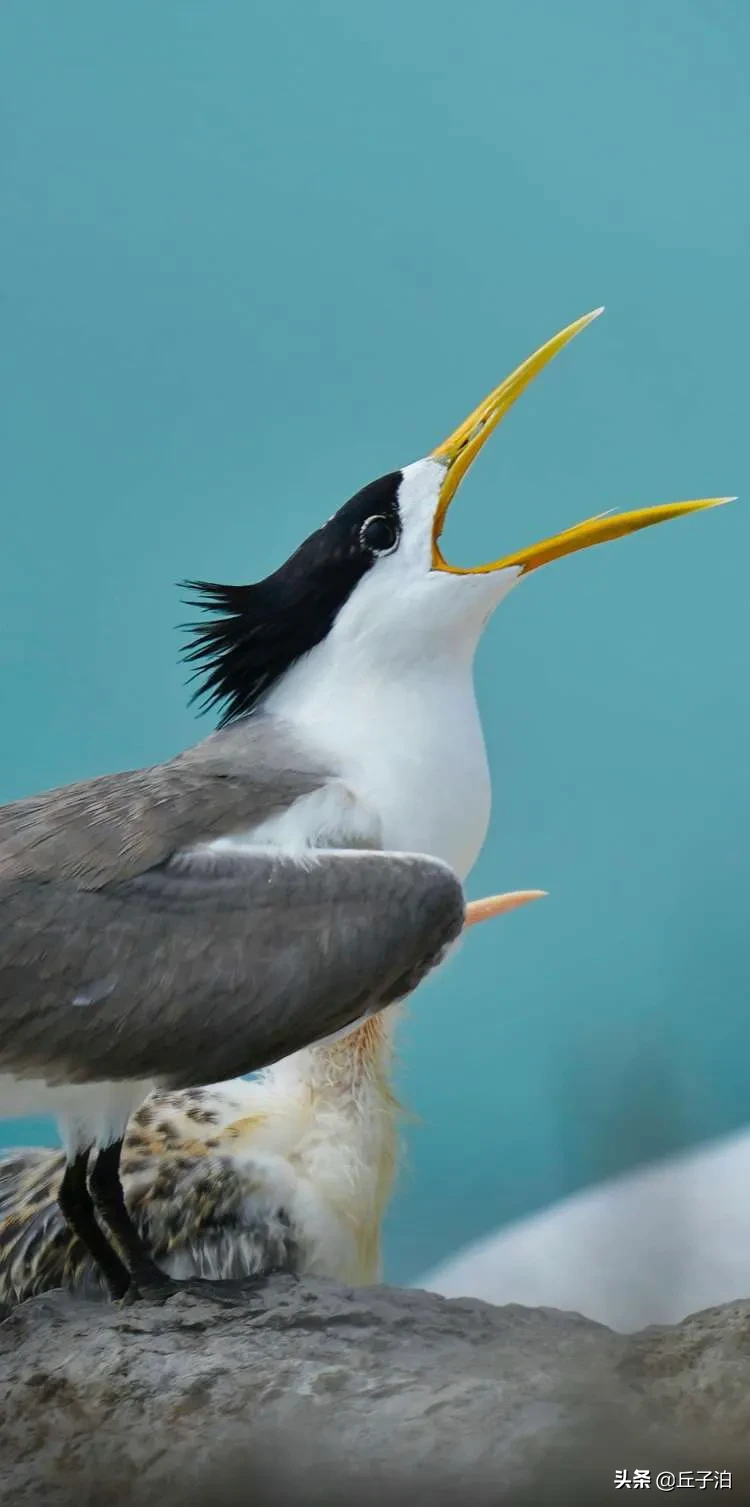Great Crested Tern #Explore Wonderful Nature#
(Scientific name: Sterna bergiii) There are 6 subspecies, 45 cm long, with a crown, the top of the head and crown feathers in summer are black, and the transition from white spots to winter feathers is white on the top of the head, and the crown feathers are gray spots. Upper body gray, lower body white. Juveniles are darker grey than adults , with brown and white spots on their upper bodies; Tail gray. The color on the mouth is most different from other crested terns. Straight beak, swallow-shaped tail. The eye is feathered first; The mouth is thin and straight, and it is bent upwards or downwards. The neck and feet are long, and the lower part of the shin is bare; The inter-toed webbing is underdeveled and the hind toe is small. Male and female birds are similar. It inhabits coastal and island rocks, cliffs, sandy beaches and oceans. Often move in groups. Frequent flights over the surface of the sea. Flocked, wading birds, good at dive diving, but mostly not swimming. It feeds mainly on fish. It also eats crustaceans, molluscs, and other marine invertebrates. Foraging is mainly on the surface of the water. The breeding season is from May to June. They often breed in groups of nests. Chicks become early. It is found in Africa, Australia, South and Southeast Asia, as well as islands in the Indian Ocean and the South Pacific Ocean.
Chinese name is the Great Crested Tern
Latin scientific names Sterna bergiii, Thalasseus bergii
Animal kingdom
Phylum Chordata phylum
Ornithopods
Habitat:
The Great Crested Tern inhabits coastal and island rocks, cliffs, sands and oceans.
Life Habits:
The Great Crested Tern is a resident bird and often moves in flocks. Frequently flying over the surface of the sea, flying with their mouths vertically downward, their wings slowly flared, and sometimes soaring in the air, they can search the air and spot underwater fish. When fish are found, they are both wings closed, suddenly plunged into the water to hunt, and immediately after catching, they flapp their wings and rise. Sometimes it floats on the surface of the sea for a long time. Or bathe in the shallow waters by the sea. At night, it often inhabits overhanging rocks or rocks on the shore. It feeds mainly on fish. It also eats crustaceans, molluscs, and other marine invertebrates. Foraging is mainly on the surface of the water.
Breeding method:
The breeding season for the Great Crested Tern is from May to June. They often breed in groups of nests. Nest spacing is mostly more than one meter. They usually nest on sandy or crispy sandy ground with sparse dwarf plants along the seashore. The nest is very simple. It is mainly a shallow pit on the sand and gravel ground by the parent birds, without any inner cushions. Each clutch lays 12 eggs, occasionally 3. The eggs are earthy grey, white, off-white, milky white or yellowish in skin, covered with reddish-brown or black-brown spots. The shape of the eggs is pointed ovoid, with a size of 58-66× 40-45 mm, with an average of 58.7 × 41.8 mm.
Population status:
The species has a wide distribution range, is not close to the fragile endangered threshold standard for the survival of the species (distribution area or fluctuation range is less than 20,000 square kilometers, habitat quality, population size, distribution area fragmentation), the population trend is stable, so it is evaluated as a species without survival crisis. #True Knowledge New Coordinates##Culture#Knowledge##Knowledge##Knowledge##Knowledge Creator Season 7 ##Knowledge Lights Up Life##Home-at-Home Knowledge##Nature##Nature On Headline##我要上 Headline##Junwen Ledao##Call Headline Jun##我在头条搞创作 #
